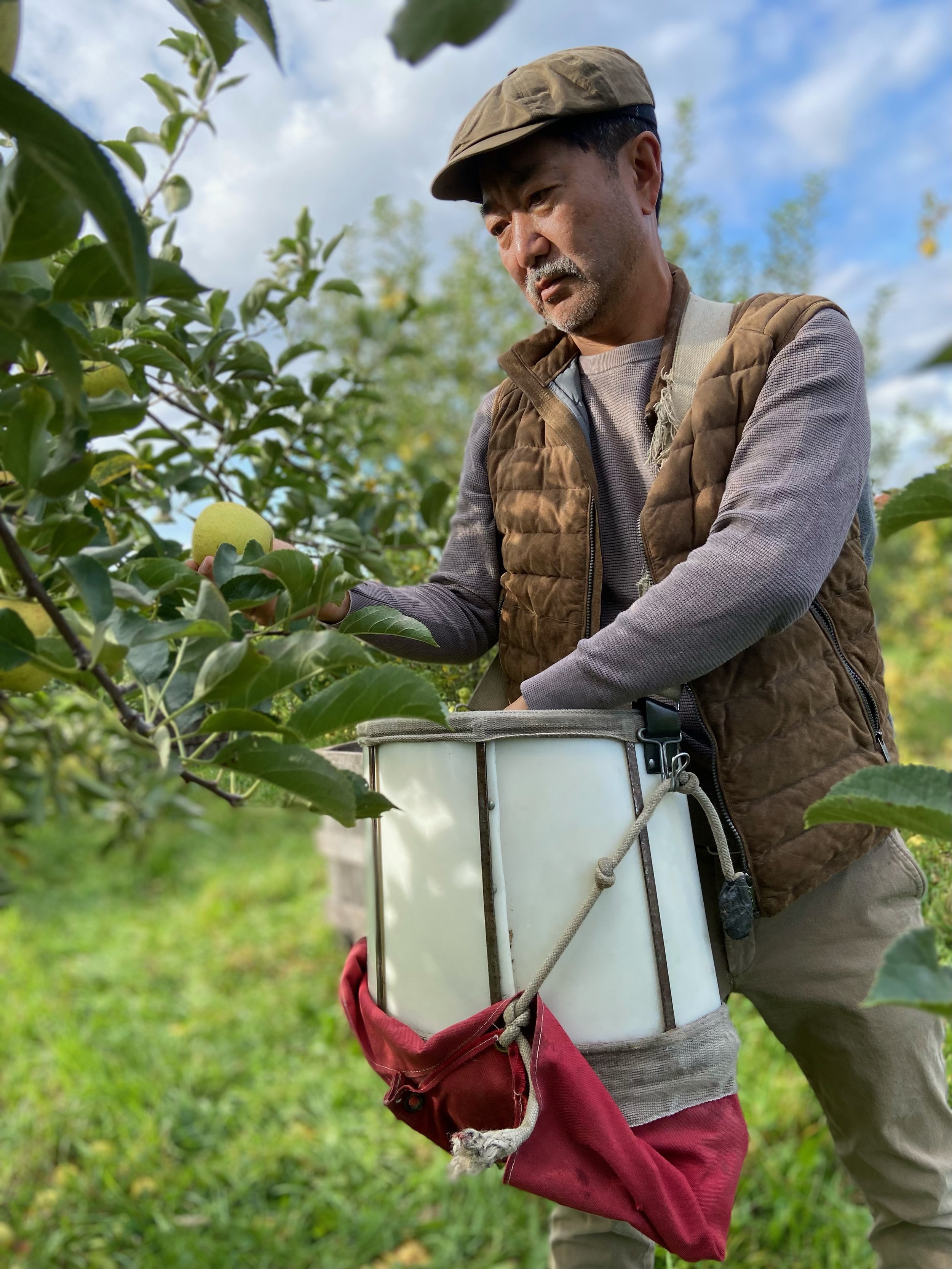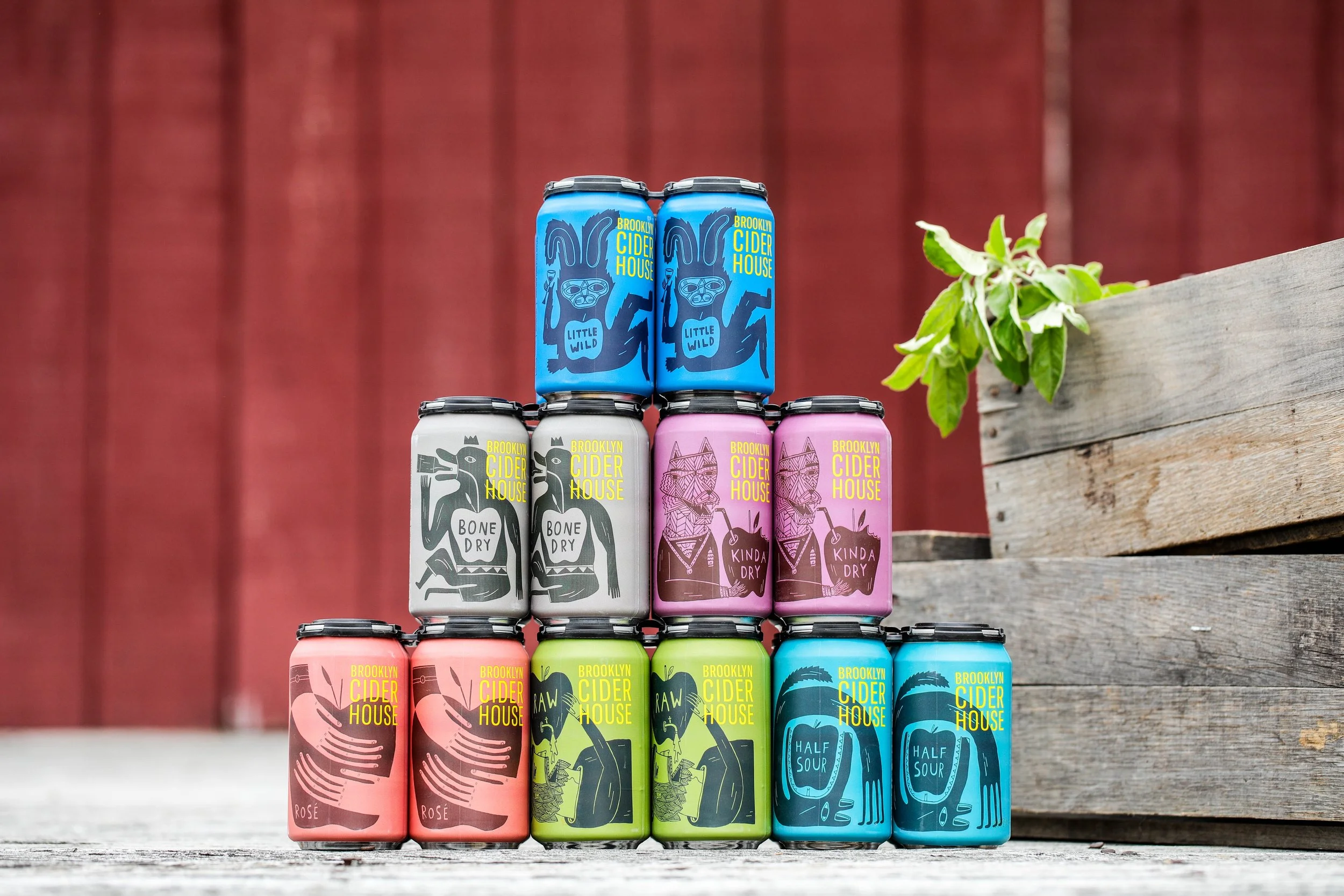From Harvest to Bottle with Brooklyn Cider House
They say one bad apple may spoil the whole bunch, but an orchard filled with ugly apples produces the purest cider. That’s the secret behind New Paltz’s Brooklyn Cider House, a cidery that offers a variety of delicious, high quality ciders.
“We are not concerned with superficial imperfections of our fruit, which is important to commercial growers who must sell into markets which require fruit to be uniform and perfect,” says Peter Yi, who co-founded the company with his sister Susan Yi. “This doesn’t mean that all of our apples are ugly, but is more telling of our growing philosophy which informs the way we farm.”
Indeed, the Korea-born siblings – who named the brand after the borough they grew up in – started their cider company keenly focused on quality. Peter took his experience in the wine industry and combined it with Susan’s flair for storytelling and management as a former English teacher, and the two bought Twin Star Orchards on Ohioville Road in 2015. They chose the Hudson Valley for its rocky terrain because it provides the fruit with more minerality — an aspect that’s especially important given there’s only one ingredient in their formula: apples.
“I come from a wine background and am heavily influenced by the winemaking process so I have an inclination to treat our ciders like wines,” says Peter, explaining the similarities between winemaking and cider making. “There are so many varieties of apples with different aromas, and many that have great acidity and rich tannins. You have everything you need to make well-balanced, nuanced ciders.”
Their process starts by producing quality fruit. The Yis admit that this is the hardest step “mostly because of how much labor and patience it takes and because it’s unpredictable and uncontrollable at times.” Utilizing dry farming, which grows smaller apples with more sugars and aromas while requiring less water, their first step comes in the late winter when they begin pruning the dormant trees, which stimulates higher production and affects the apples that grow. This careful thinning requires finding strong central stems, called leaders, with horizontal branches.
From there, tree growth is constantly monitored, from the water to the weather. “For high quality cider, you don’t want to feed the trees more than what is absolutely necessary,” says Peter. “Some of the best wines are produced in vineyards with low water and nutrients, and the same is true with cider fruit. The harsher environment means the fruit will contain less water and more intense aromas and sugars.” Today their 50-acre orchard has more than 30 varieties of apples, including Manchurian Crab, Ashmead’s Kernel, and Gold Rush. Even so, Peter, who’s been farming for less than a decade, says he’s “learning every single day.”
But his instincts are no doubt getting savvier. “Apples are ripe when they come off easily from the tree,” he says of the harvest. “You can also tell the ripeness of most apples by the color of their seed. Ripe apples have dark brown seeds.”
Once they’re off the trees, the fruit go through a process called sweating, which is basically letting them sit and lose water for a couple of weeks. During this time, the apples ripen, and the aromas and sugars also increase. Afterward, they’re put through a machine that washes them, and then runs them through a grinder and a press.
Next comes the fermentation and aging process, which is where distinct ciders get their flavors. They all start out in temperature-controlled stainless steel tanks, and take about two to four weeks to turn alcoholic. Then the specifics come in. For instance, the Raw that they will bottle in December includes a blend of the 2020 harvest. “It's been fermenting and aging on lees for around two years and involves three stages of fermentation,” says Peter. The Kinda Dry is much faster, “involving only the alcoholic fermentation, which we stop midway to capture some natural residual sugar, and that takes around three months from harvest to bottle and can.” (For drys, all the sugar is fermented; for off-drys, it’s fermented at certain sugar levels.)
“Right now, I’m a bit of a purist with ciders,” says Peter, of sticking to one ingredient. “Perhaps this is my own personal challenge — to see what I can do with just apples. It’s amazing how different batches of the same apple variety can be so different from one another, even when they undergo identical processes.”
The only ciders that are pasteurized are the sweet ones, which receive a flash pasteurization to retain their taste. The final step is bottling. Most go to a bottling facility, but their small-batch ciders, including Three of Life and Opari, are hand bottled.
Brooklyn Cider House, which originally had its cidery in Bushwick in 2017 before moving all of its operations to the Hudson Valley during the pandemic in 2020, now offers eight ciders, including Peter’s favorite, Raw (“It’s a natural cider that is unbelievably versatile with food.”) and one of Susan’s picks, Half Sour (“It’s floral and crisp and has a touch of sweetness.”)
The idea for the business started while Peter was on a wine trip and was “dragged” to the Isastegi cider house in Tolosa in the Basque Country. “I found myself catching ciders from huge chestnut barrels with friends I would call family, eating chuleta, and time really stopped,” he says. “It completely changed my view of cider and shortly thereafter changed my life.”
He’d long been trying to convince Susan to join the wine business, but it wasn’t until he had the vision to make cider from New York apples that her interest was piqued. “It was definitely a passion project,” she says. “It was about bringing a natural cider style to the Big Apple — a cider that, at the time, had no presence in the U.S. market, recreating that memorable experience that Peter had at Isastegi.”
While there were challenges in the initial years, Brooklyn Cider House has become a staple Upstate. “We are very grateful and proud each time we walk into a bar or store and see our cider on tap or on the shelf,” says Peter. “It’s been a crazy journey, really rough at times, but well worth it.”
On top of it, they’re also making their mark as part of the AAPI community. “It’s needed — particularly, in farming and cider making, Asian Americans don’t have much of a presence,” says Susan.
But, when it comes down to it, what matters most to the Yis is making quality single-source cider. “We encounter a lot of people who are averse to cider, but it’s usually because they’ve only tried commercial cider that is made from poor quality apples and has tons of flavorings and additives,” he says. “When you start from high quality ingredients, you end up with profoundly different products.”
Find @brooklynciderhouse in New Paltz, New York. www.brooklynciderhouse.com
By Rachel Chang
Images courtesy of Brooklyn Cider House
Volume 9









